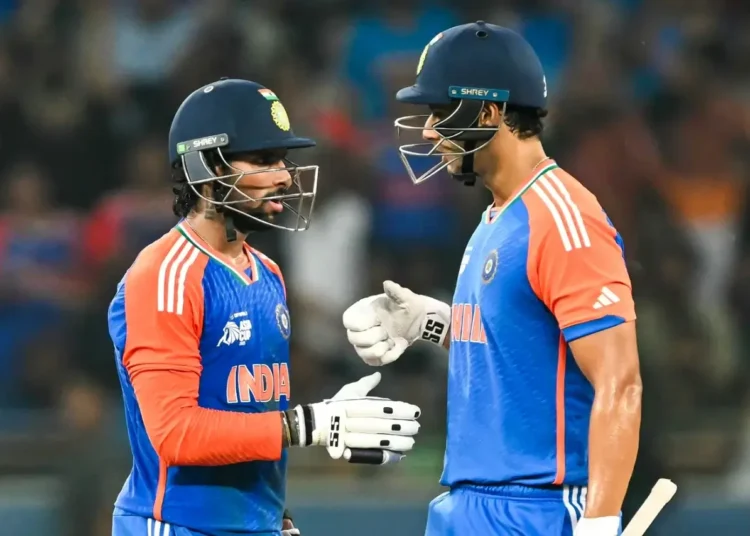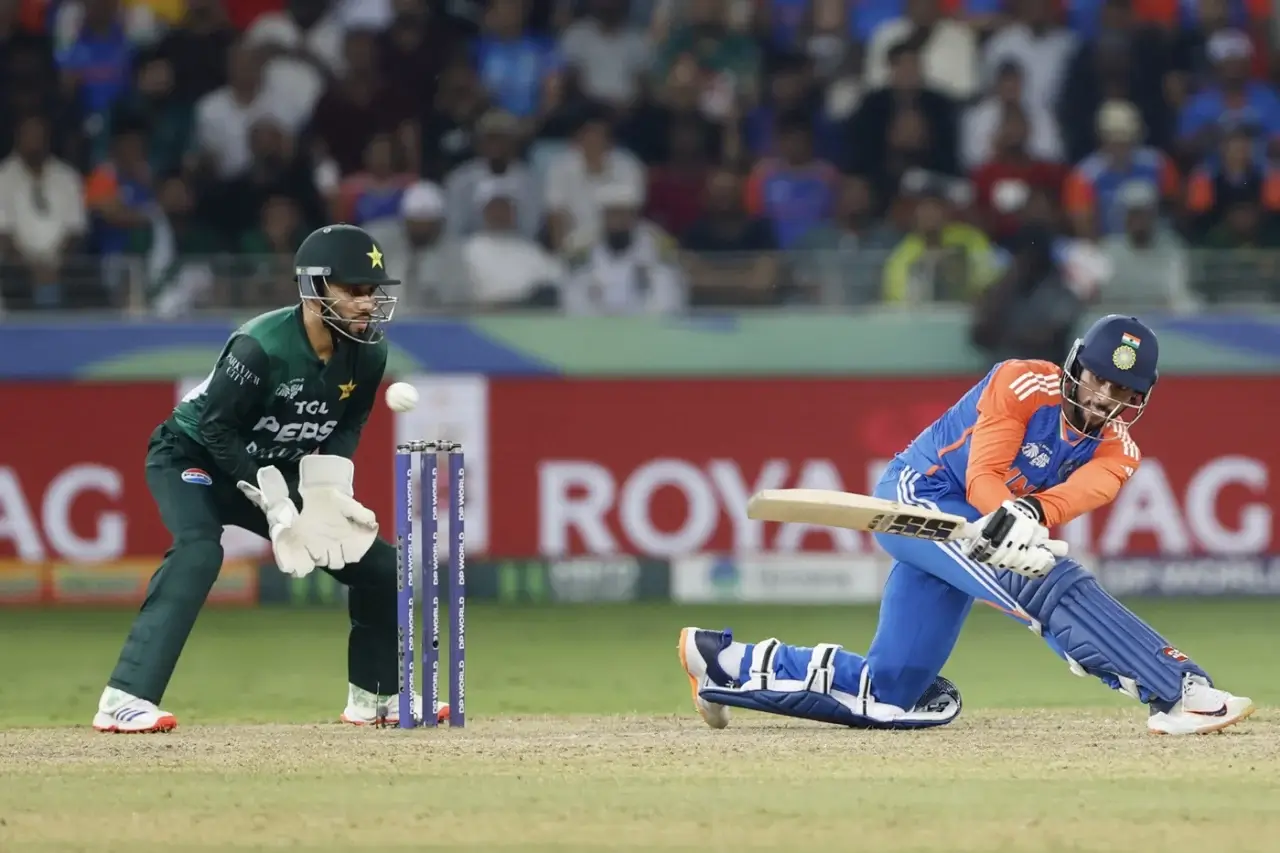Dubai’s lights felt electric as the final reached its decisive phase and the crowd buzzed. India chased one hundred forty-seven and lost several early top-order wickets quickly. At twenty for three, the scoreboard looked fragile and the momentum swung away briefly. Two players arrived calmly and rebuilt the chase with clear roles and intent.
Tilak walked in with measured timing, soft hands, and precise footwork to rotate strike. Dube followed with cautious singles, then punished loose length with powerful midwicket strikes aggressively. Their stand mixed rotation, boundaries, and sharp running between the wickets to ease pressure. That partnership rewired momentum and steadied the chase under intense stadium pressure.
Dube’s thirty-three off twenty-two accelerated the scoreboard during crucial middle overs and lifted belief. Tilak’s unbeaten sixty-nine anchored the innings and guided the chase home with composed intent. Rinku finished the match and released the dressing room into raw, joyful celebration afterwards. Earlier wins over Bangladesh and Hong Kong had already sharpened roles and built a useful match rhythm.
How did Tilak and Dube rebuild the chase under pressure?
Tilak entered when the chase needed calm decision-making more than wild hitting or flare. He rotated strike with soft hands and crisp footwork while finding clean boundary options when available. Those singles and timely fours slowed Pakistan’s early momentum and forced field repositioning repeatedly. His composed presence reduced panic and encouraged smarter running between the wickets from partners.
Dube began cautiously to settle his eye before unleashing authoritative, lofted midwicket strokes on fuller length deliveries. He punished Abrar Ahmed’s fuller balls and punished short balls with reach and top-hand power often. Haris Rauf’s expensive over-gifted crucial runs and swung belief firmly back toward India during a critical phase. The pair mixed measured defence with bold hitting to keep the required rate manageable under pressure.
Their running between wickets forced quick field adjustments and turned singles into doubles frequently to build momentum. When the equation tightened, Dube’s sixes shortened the chase and reduced the required scoring time effectively. Tilak then combined timing and intent to guide the innings through tense closing overs with clarity. When ten were needed off six balls, temperament and execution decided the final act and outcome.
Traits that defined their innings and roles
Both showed calm reads and sharp match awareness when the scoreboard read crisis, and nerves rose. Tilak used nimble footwork and precise timing to keep singles and boundary options consistently available. Dube used reach, upper-body leverage and confident lofts to punish loose balls and accelerate scoring quickly. Their smart running added extra runs and continuously pressured tired fielders into mistakes and misfields.
Clear role definitions let each player focus on match-specific tasks without panic or overreach during key overs. Tilak anchored with patience while Dube assumed the aggressive finishing mantle and attacked the scoring gaps. This blend of restraint and aggression minimized risk and maximized scoring when bowling lines eased periodically. Selectors now possess stronger, actionable evidence to back both in future tight chase templates.
Momentum builders — India’s dominant wins before the final
India’s wins over Bangladesh and Hong Kong set clear tournament momentum and sharpened team balance quickly. These matches allowed testing of batting orders and provided finishers with match-ready minutes under less intense pressure.
Against Bangladesh, the team refined middle-over spin plans and patient shot selection that paid off under duress. The Hong Kong fixture gave seamers early breakthrough practice and improved disciplined length execution across conditions.
Bench players earned meaningful minutes, which built confidence and provided selectors with practical depth evidence. Coaches used those games deliberately to rehearse late-chase scenarios and test finishing permutations under match conditions. Those rehearsals reduced panic tendencies and made late-match decisions feel more like practiced execution than improvised reactions. The accumulated rhythm and role clarity from those wins were clearly visible during the final’s closing overs in Dubai.
Lessons India applied successfully in Dubai
Preparation emphasised role clarity, strike rotation, and practiced finishing under simulated match pressure repeatedly. Players learned to pick correct scoring balls and avoid risky swings during crucial overs and moments. Spin handling improved through focused middle-over drills, while seam plans sharpened via repeated match exposure and small tactical tweaks. Bench minutes converted into trusted options, giving the captain and coaches more flexibility in tense finish scenarios.
Coaches refined tactical points via replay sessions and practical in-game corrections that cut down execution errors. This disciplined approach reduced panic and improved execution during the final’s most stressful phases under bright lights. The result was a final that felt less like improvisation and more like a rehearsed plan executed with calm confidence. That clarity and process now serve as a template for future high-pressure matches and finishing drills.
Conclusion
This night moved both men from promise into proven match-winning capabilities and clearer roles. For selectors this match supplies actionable evidence when choosing finishers for similar chase templates ahead. For fans it created vivid scenes, calm composure, and a thrilling finish that will be remembered for years. From planning to execution, India’s final-night score showed clearly the tangible value of rehearsal and role clarity.
Tilak’s anchor innings now appears repeatable across varied chase scenarios, offering the team a dependable top-five stabiliser. Dube’s finishing power and occasional bowling utility provide flexible tactical choices for captains and support staff. Rinku’s composed closing under pressure reinforced the squad’s depth and the bench’s match readiness convincingly. Together they converted preparation into performance, leaving selectors and coaches with clear, usable proof for future tournaments.
















